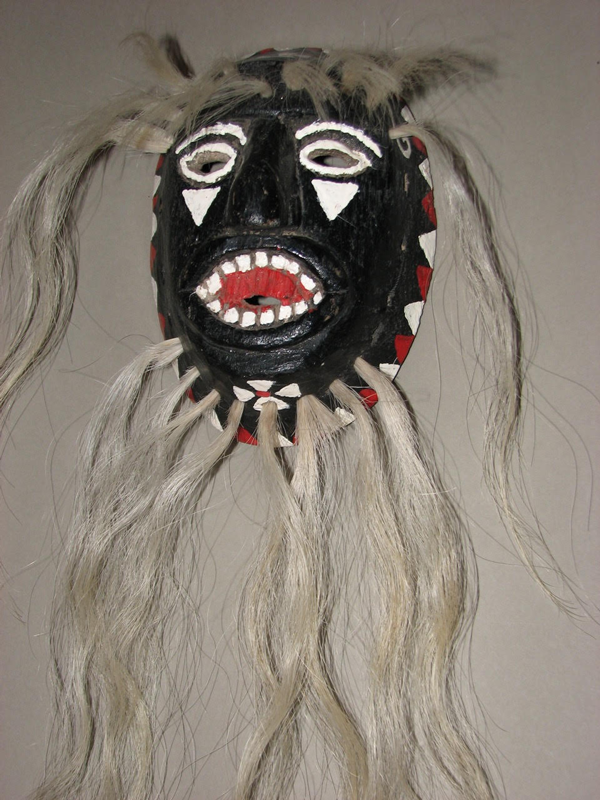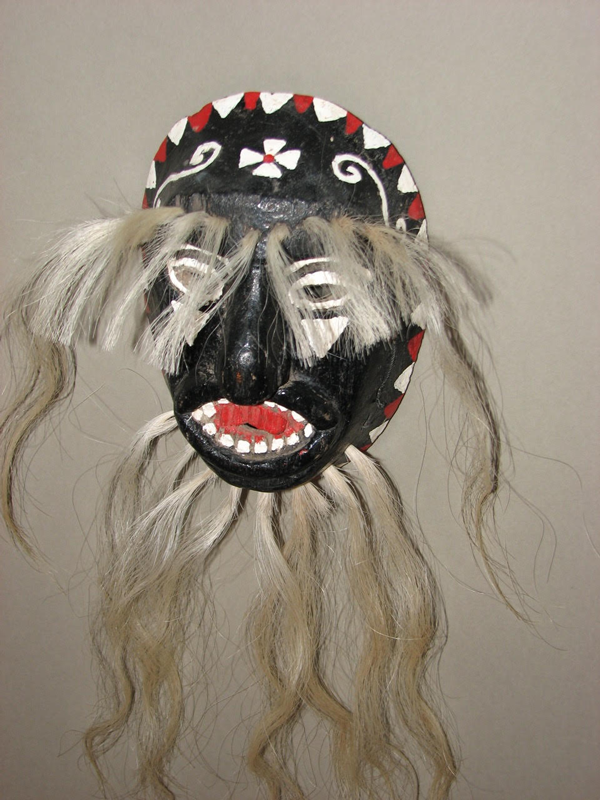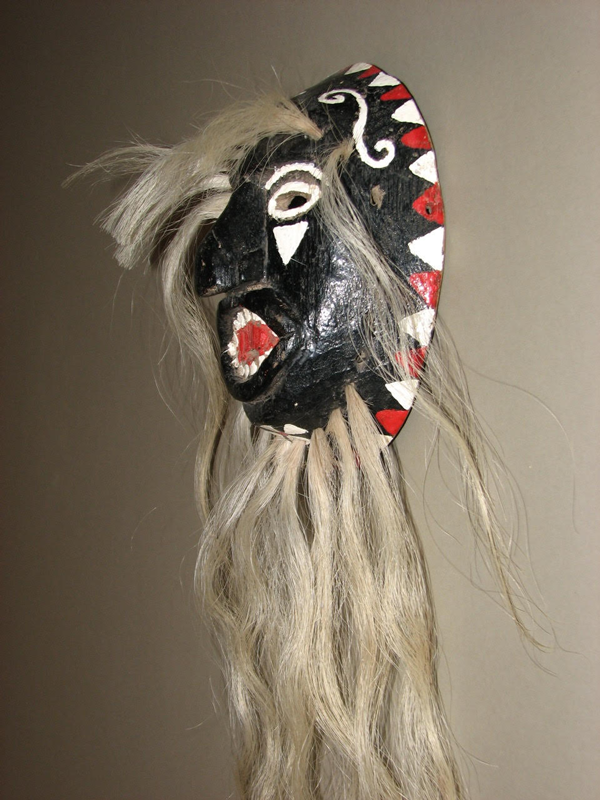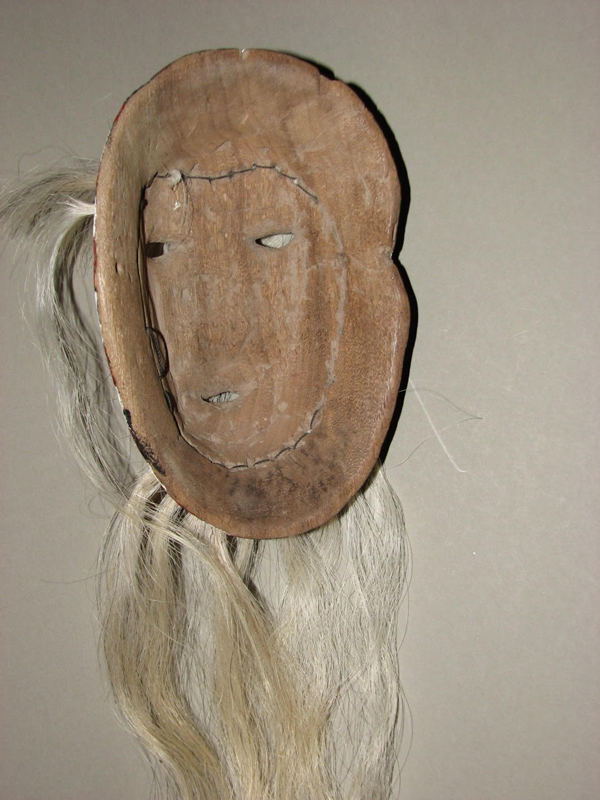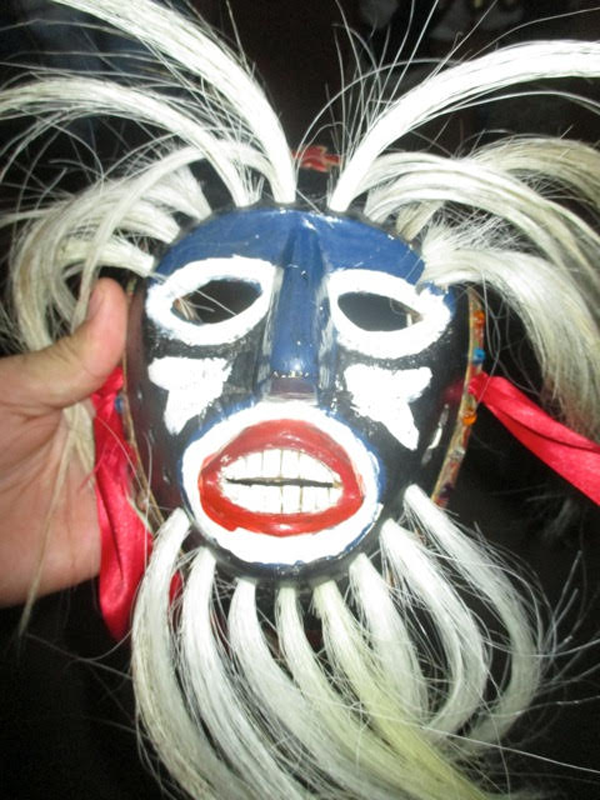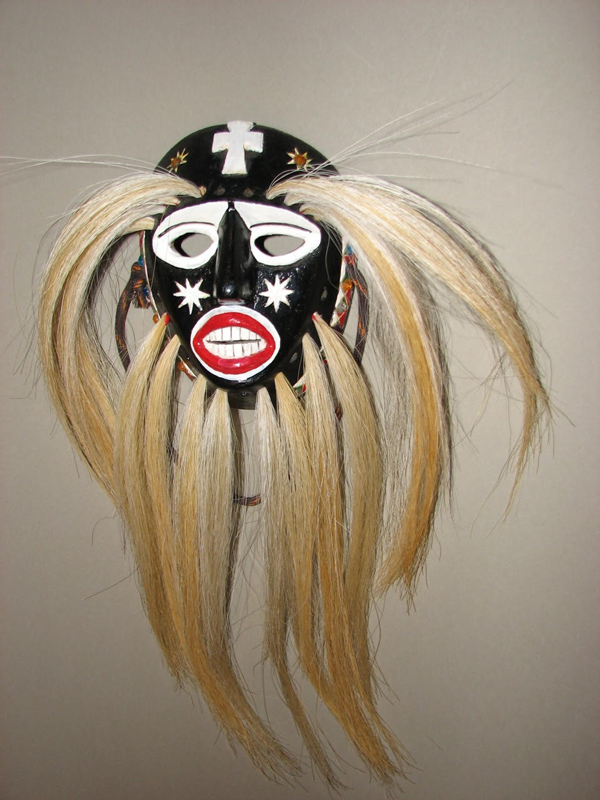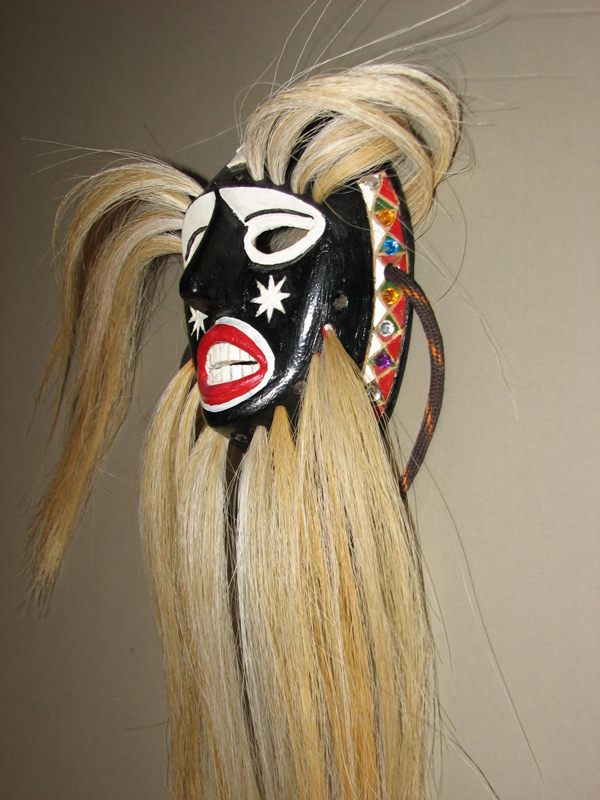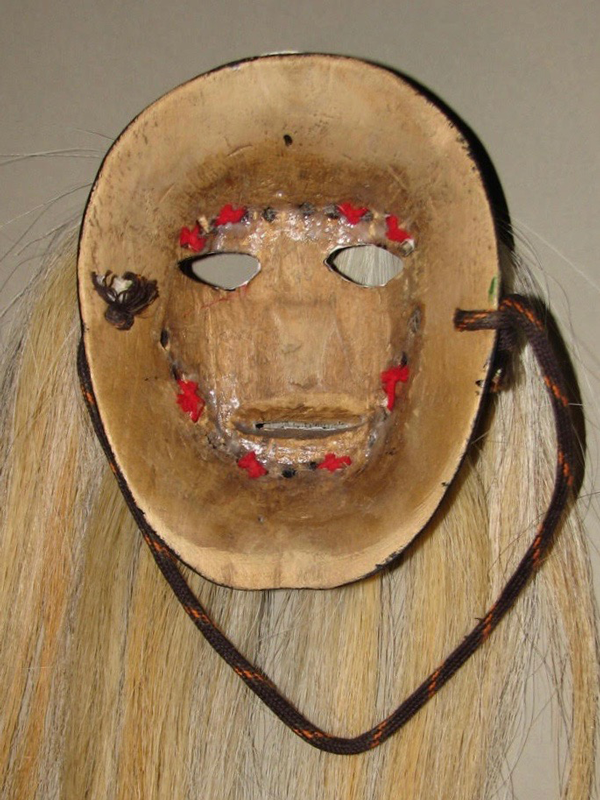Identifying Pascola Masks—Old or Contemporary?
By guest contributor Tom Kolaz
As you may have gathered, Dr. Stevens and I have had many dialogues about masks, carvers, and Indian culture over the past 25 years, in person and via email, and these have been enlightening and enjoyable for both of us. I have read with interest his blog about Mexican Dance Masks over the last three years. His posts during this past year on Pascola masks have been my favorites, for many reasons. Dr. Stevens is methodical in his identification process and he brings years of experience to the task of identifying and speaking about Yaqui and Mayo Pascola masks, after viewing and handing hundreds of them in public and private collections, including my own.
Dr. Steven’s blog provides a wealth of information that encompasses years of thought, travel, observations and scholarly research. He has a pleasant way of presenting his readers with almost “matter of fact” information that has taken decades to be able to discern.
I met Dr. Stevens while working as a curator at the Arizona State Museum. It was a week or so before Easter and I learned from my colleagues that Dr. Stevens was “right on time” for his annual visit to the ASM collections division to view the Pascola masks yet again! My kind of guy.
My interest in Pascola masks focuses primarily on contemporary masks and carvers (the last 30 years or so). I particularly like masks made by carvers I have met, repeatedly interviewed, and photographed during the process of the carving. I enjoy observing a mask in the making and then seeing it worn at ceremonies. It intrigues me seeing how a mask changes in appearance over the course of further use. Masks are initially made by a carver, and are then very often made over or remade by the dancers who use them, so that these masks reflect the dancers’ design preferences and paint colors rather than those of the carver. Lastly, I am interested in the relationships that Pascolas have with their masks, do they have one or more masks that they use on a regular basis, do they loan their masks out to other Pascolas, and how often do they clean and touch up their masks? Such topics will be the subject of this post. I will tell about a single Yaqui mask (like those you have read about in the past year on this blog) and then a single Mayo Pascola mask.
An Old/New Yaqui Pascola mask.
This mask is an old (1950s) Yaqui Pascola mask that was brought to a Yaqui carver to be refurbished. The owner, a Pascola dancer who had used the mask for decades, sought help because the hair was falling out, the paint had faded, the face was dinged up, and it was showing it’s age. The carver, a friend of mine who was certainly not the original maker, told the Pascola that he would be happy to refurbish the mask and to come back in a few days. The Pascola dancer returned to pick up his mask; while visiting he noticed some masks that this carver had recently made. One in particular caught his eye and he told the carver he would like to buy the mask but he didn’t have money to purchase it. The carver, knowing that I was researching masks of various ages and that I would probably buy the old mask (now refurbished), told the Pascola he would trade him the mask he wanted for his old mask. The Pascola was thrilled to make the trade and get such a fine new mask.
The next time I saw my friend he pulled out the mask, told me the circumstances of its acquisition, and asked if I wanted to buy it. I did, of course, because its story illustrated the commerce and exchange of masks among the Yaquis better than I could explain. So, do I have a new mask or do I have an old mask? I would say that I have both!
This back was not cleaned, and demonstrates significant staining from use, particularly around the inside of the rim. As expected, the flat inner surface of the back is less darkly stained, since the rim has greater contact with the dancer’s face. One of the original head strap holes had completely worn through the mask’s rim and a new hole was made many years ago, reinforcing the amount of use and age of this mask.
Old/New Mayo Pascola mask.
I would like to show how sometimes (actually often) old masks become contemporary masks in the eyes of the collector. By this I mean that masks are often given a fresh coat of paint, new hair, the interior is scrubbed clean, and a new head strap added. I have seen collectors and dealers cringe at the sight of such masks and dismiss the masks as having little interest and less value. I see just the opposite. I see an old mask, in service to one or several pascolas over many years/decades and now it lovingly has been given a needed face lift. Of course it is helpful to be able to recognize the old mask that hides under these improvements, because the majority of danced masks that show up on the market lack any history or provenience.
A Mayo Pascola dancer offered to sell me one of his masks. The owner of the mask had let his friend use the mask on numerous occasions (it was the owner’s segunda or secondary mask) because the other did not have his own mask. When the owner decided to sell the mask to me he told his friend he needed the mask returned. Here is an old photo that the seller had sent to me.
This older mask was fairly recently repainted, and somewhat carelessly, but the design of the painting pattern is very typical of several well known traditional Mayo carvers. I had agreed to buy the mask on the basis of this image.
The friend said he would bring it over to the house in a few days, and the owner assured his friend that he would have another mask for him to use in the future (I had provided the owner with a new mask at the time of purchase). The friend returned the mask and thanked the owner profusely for allowing him to use it for so long. As a token of his appreciation he had completely refurbished the mask, without the owner’s knowledge or consent! This is a fairly common occurrence and just one example of how an old mask becomes a new contemporary mask in the eyes of many.
If you scroll up and down you will see that some of the painted details have changed. The formerly red forehead cross is now a large white relief carved piece that is glued to the forehead, and the mask has its original sun or star designs that were covered under thick layers of paint, and now brought back to life. The Pascola did a fantastic job or refurbishing this mask.
The rim design with its plastic jewels seems relatively unchanged, in comparison.
This is what the back of an old and heavily danced mask looks like after it has been superficially cleaned.The outer edge of the rim should be as darkly stained as it is on the deeper part. Nevertheless, one would never mistake this back for one that was lightly danced, because it remains so smoothly worn, polished from extended use.

